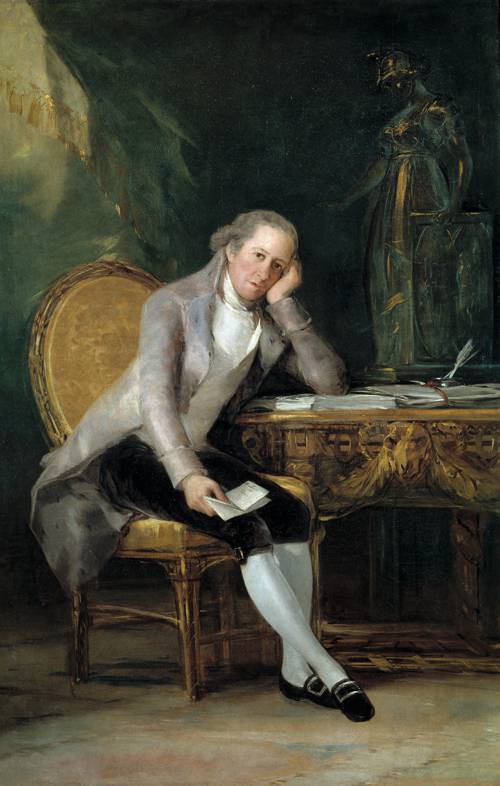
FAQ About Francisco Goya

Who was Francisco Goya?
Francisco Goya was a prominent Spanish painter and printmaker, born on March 30, 1746, in Fuendetodos, Spain. He is considered to be one of the most significant artists in Spanish history and a pivotal figure in the transition from the Old Masters to modern art. Goya is known for his intense and often dark depictions of historical upheavals, societal issues, and the human condition.

What are some of Francisco Goya's most famous works?
Some of Francisco Goya's most famous works include the series of prints titled Los Caprichos, the painting The Third of May 1808, and The Black Paintings, a series of disturbing murals he painted directly on the walls of his home. Other notable works include Saturn Devouring His Son and the portrait The Sleep of Reason Produces Monsters.

What style of art is Francisco Goya known for?
Francisco Goya is known for his Romantic style of art, which is characterized by its dramatic intensity and use of emotion to convey deeper truths. His later works exhibit a dark, haunting quality that foreshadows modernism and offers a critical examination of contemporary society and human nature.

How did Francisco Goya's work influence modern art?
Francisco Goya's work is considered a bridge between the classical and modern art worlds. His exploration of psychological themes, use of bold imagery, and willingness to tackle contemporary social and political issues influenced later artists like Édouard Manet and Pablo Picasso. Goya's work is seen as a precursor to movements such as Realism and Expressionism.

What are 'The Black Paintings', and why are they important?
'The Black Paintings' is a term used to describe a series of 14 intense and nightmarish paintings by Francisco Goya. These works were painted directly on the walls of his home in the last years of his life. They are significant because they represent Goya's deep pessimism and loss of faith in humanity, reflecting his disillusionment with the socio-political climate of the time. These paintings are often credited with showcasing early elements of expressionism and were crucial in influencing future generations of artists.

Why did Francisco Goya paint 'The Third of May 1808'?
Francisco Goya painted 'The Third of May 1808' to commemorate the Spanish resistance to Napoleon's armies during the Peninsular War. This work highlights the brutality of war and depicts the execution of Spanish civilians by a French firing squad. It is often regarded as one of the first pieces of modern art due to its emotional impact and dedication to depicting real historical events with realism and empathy.

What personal challenges did Francisco Goya face during his life?
Throughout his life, Francisco Goya faced several personal challenges, including a severe illness in 1793 that left him deaf. This condition significantly influenced his art, leading to the darker and more introspective tone seen in his later works. Additionally, Goya lived through turbulent times in Spain, marked by war, political shifts, and social strife, which profoundly impacted his mental health and artistic expressions.

What themes are commonly explored in Francisco Goya's artworks?
Francisco Goya's artworks commonly explore themes such as war and human suffering, societal and political critique, madness, folklore, superstition, and the darker sides of human nature. His work often reflects his personal disillusionment with humanity and the socio-political issues of his time, portrayed through bold and sometimes grotesque imagery.

Where can Francisco Goya's artworks be seen today?
Many of Francisco Goya's artworks can be seen in major museums and galleries worldwide. Some of the most notable collections include the Prado Museum in Madrid, the Louvre in Paris, and the British Museum in London. These institutions feature pieces like The Third of May 1808, The Black Paintings, and his famous series of prints.

How did Francisco Goya's political views influence his work?
Francisco Goya's political views had a significant influence on his work, particularly during the tumultuous period of the Peninsular War and Spain's political upheavals. Goya was critical of the corruption and brutality he witnessed in society, which is evident in his paintings and prints that tackle themes of social injustice, political and religious critique, and the human cost of war. His pieces often convey a profound sense of empathy for the plight of the common people.

What is the significance of the series 'Los Caprichos'?
'Los Caprichos' is a series of 80 prints created by Francisco Goya that critique the social and political issues of his time, such as superstition, corruption, and the shortcomings of human nature. These prints are significant for their innovative use of satire and have been interpreted as a reflection of the Enlightenment ideals clashing with the conservative society of 18th-century Spain.

How did Francisco Goya's health affect his art?
Francisco Goya's health significantly affected his art, especially after a mysterious illness in 1793 that left him deaf. This personal challenge deepened his introspection and led to a darker, more emotional style. His later works, including 'The Black Paintings', reflect his inner turmoil and a more pessimistic view of society and human nature.

What are some lesser-known facts about Francisco Goya?
Some lesser-known facts about Francisco Goya include his early career as a tapestry designer, which helped him develop his skills in color and composition. Additionally, despite his later somber themes, Goya was known for his vibrant and lively portraits of the Spanish elite. He was also one of the first artists to utilize prints as a means to reach a wider audience.

What role did Francisco Goya play in the Spanish court?
Francisco Goya served as a court painter for the Spanish Crown, where he painted portraits of the royal family and members of the aristocracy. His role granted him unique insight into the workings of the Spanish court and heavily influenced his later critical depictions of power and corruption. Despite his official position, Goya remained a keen critic of societal flaws, which is evident in his more personal works.

Did Francisco Goya have any notable artistic influences?
Francisco Goya was influenced by a variety of artists and movements. Early in his career, he admired works by the baroque artist Diego Velázquez and the neoclassical style of Anton Raphael Mengs. Over time, Goya's exposure to the Enlightenment era's ideas also shaped his approach, focusing on realism and social criticism. His work later in life shows an intuitive understanding of human emotion, influenced by his experiences and observations of the world.

How did Francisco Goya's work reflect the historical events of his time?
Francisco Goya's work reflects the historical events of his time by vividly documenting the impacts of the Peninsular War, French invasion, and the societal changes in Spain. Paintings such as The Third of May 1808 portray the brutality and tragedy of war, while his series like Los Caprichos and Disasters of War illustrate his critique of societal conditions and the human experience amidst turmoil.

What materials and techniques did Francisco Goya use in his art?
Francisco Goya used a variety of materials and techniques throughout his career. He worked extensively with oil paints for his larger pieces and portraiture. Goya was also renowned for his mastery of printmaking techniques, particularly etching and aquatint, which he employed in his series like Los Caprichos and Disasters of War. His innovative use of these techniques allowed him to reach broader audiences and express complex themes.

Did Francisco Goya have any apprentices or influence any future artists?
Francisco Goya is known to have influenced many artists, both contemporaneous and future, but there is little evidence of him having formal apprentices. His artistic style and thematic focus anticipated various modern art movements, influencing artists such as Édouard Manet, Pablo Picasso, and the expressionists. Goya's emphasis on the darker aspects of human experience and his innovative techniques left a lasting impact on the trajectory of Western art.

What was the impact of Francis Goya's work on society during his lifetime?
During his lifetime, Francisco Goya's work had a complex impact on society. While celebrated as a court painter, his more personal works often challenged social norms and critiqued political and religious institutions. Although not overtly controversial at the time, his works like Los Caprichos and The Disasters of War resonated with Enlightenment thinkers and those questioning the status quo, pushing boundaries in how art could reflect and critique reality.

Where was Francisco Goya born, and where did he spend most of his life?
Francisco Goya was born in Fuendetodos, a small village in Spain, on March 30, 1746. Throughout his life, he spent considerable time in major Spanish cities such as Zaragoza, where he apprenticed; Madrid, where he established his career and worked at the royal court; and finally Bordeaux, France, where he lived in self-imposed exile before his death in 1828.
